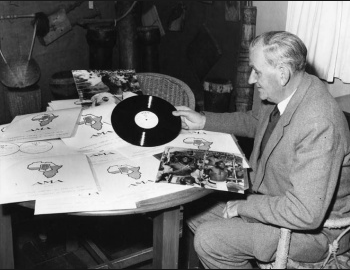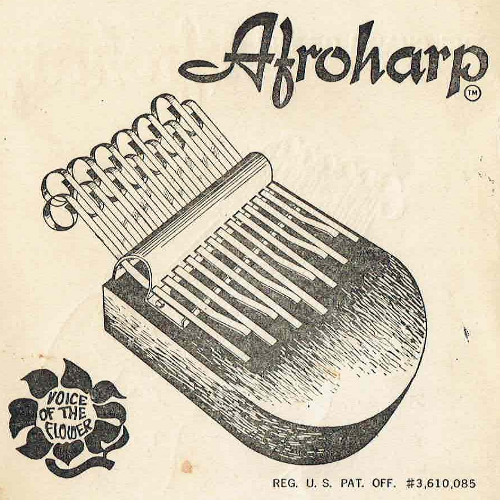
These are the Hugh Tracey patent models from the 1960s. With success comes competition and imitation. Kalimbas are made, not just in Africa, but in America, Germany, France, Pakistan, Slovakia, Japan, China, and everywhere between.

The kalimba was not a commercial success until after public exposure by Wait a Minim! and Creative Playthings, but by the late 1960s AMI was doing well and provided enough income to fund ILAM, the International Library of African Music. This success allowed ILAM to begin distributing “The Sound of Africa”, a set of 210 LP records, to universities and research institutions. Paul Tracey recalls his father using some of this new-found wealth to buy a used Rolls Royce to drive around his compound at Roodepoort, South Africa.

But with commercial success came copycats. Kalimbas don’t employ space age technology – they are basically very simple instruments. Many craftsmen and companies around the world began to make their own. The kalimba was in part a traditional folk instrument and could not really be protected by a patent. And as mentioned earlier, the name “kalimba” itself is the name of a type of traditional African thumb piano.
One of the early competitors to the Hugh Tracey kalimba was the Afroharp, patented in 1971 by James B. Wilson and Fred Kaz, musical director for the Second City acting group. Many other brands came and went, but over the entire 65 years since they were founded, African Musical Instruments has continued making Hugh Tracey kalimbas.
Hugh Tracey was an enormously charismatic man, and his personal relationships with many across the globe helped to maintain the financial health of ILAM, in spite of the fact that the stench of the racist apartheid system in South Africa was effecting sales. After Hugh Tracey’s death in 1977, with increasing world-wide pressure to boycott goods from South Africa and to cut ties with South African institutions, ILAM was no longer getting the outside funding it needed to stay above water.
When he died, Hugh left his son Andrew in charge of ILAM to curate the collection and promote research into African music, and Andrew’s wife Heather Tracey in charge of AMI to oversee kalimba production. After much negotiation, Andrew made a deal with Rhodes University in Grahamstown (in the far southern part of South Africa) to host ILAM. This lifted the financial burden from the organization, and would maintain and grow the collection, and support research activities. With ILAM’s relocation to Grahamstown, AMI and the kalimba factory also moved. Grahamstown is in a province inhabited by the Xhosa and Zulu peoples, who have no history of the kalimba; their traditional music featured singing, rhythmic beating of war shields, and musical bows. New local workers were hired and trained to build the kalimbas, and through these workers a new culture of kalimba playing in Grahamstown is starting.


Sign up for our newsletter and free resources with your email address:
We pinky promise not to spam you and to only send good stuff.
 Christmas in July 2025
Christmas in July 2025 Patriotic and American Music for Kalimba
Patriotic and American Music for Kalimba